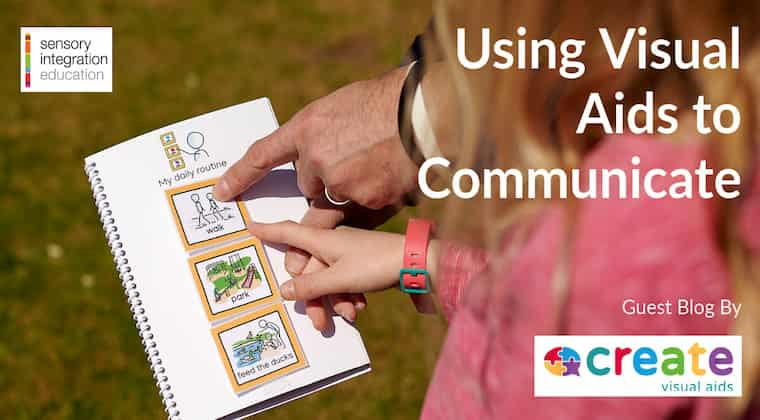Using Visual Aids to Communicate
By Gina Smith, 21 October 2021

This is a guest blog on using visual aids to communicate by Gina Smith, founder of Create Visual Aids:
"I’m Gina, a specialist in visual communication, qualified teacher and mum to two girls.
"While teaching in both mainstream schools and special needs settings, I marvelled at how a simple visual timetable (made up of words and pictures) could help calm anxious students, and help them be mentally and physically ready for learning.
"I was also aware, however, that many children had access to the visuals they needed at school, but did not have access to them at home. So, 8 years ago I set up Create Visual Aids and since then I have developed my own range of visual symbols and resources, helping families communicate.

So why do visuals make such a difference?
"When children can see what’s coming next they feel more calm and in control. The problem in today’s busy world is that children are often taken from one activity to another, and don’t understand what is coming up in their day. This can make them feel extremely anxious and stressed, especially if a child struggles with transition. If we can communicate to them what is happening, then they will feel calmer and happier because they understand what is coming up next and are prepared for changes.
"Likewise, if someone is struggling to communicate something that they want to say to others, they are likely to feel very frustrated. When we are frustrated, our behaviour changes. Visuals can also be used to give a child a voice – allowing them to communicate with you by showing you want they want to say.
Visuals are a great way of communicating because they:
- Don’t disappear like spoken words do.
- Allow for processing time – a child can look at them for as long as they need to until they understand the information being shown.
- Communicate routine and transition.
- Have no tone of voice – sometimes saying something in two different ways can come across as an entirely different instruction. Visuals remove this confusion.
- Are universal across all languages.
- Promote independence – they show a child what they need to do next to get ready.
- Can be transferred between environments.

"Finally, visuals can also help with someone’s emotional development by giving them a tool to communicate how they are feeling.
"You may find your child would benefit from visual symbols if they struggle with transition, struggle with their emotions, constantly ask what is coming up next, get frustrated that they can’t communicate with others, or need help becoming more independent.
"I’m on a mission to raise awareness of the benefits of visual communication, and how it can be integrated into family life. Create Visual Aids donates a percentage of website profits to the National Autistic Society to help them continue to support people on the autism spectrum and their families in the UK.
"If you think that visuals would benefit your family life but don’t know where to start, please get in touch. I am always happy to help."
Create Visual Aids helps people communicate through the use of visual symbols, bringing calm and easing anxiety for individuals with autism or other communication difficulties. You can find out more at www.createvisualaids.co.uk.

